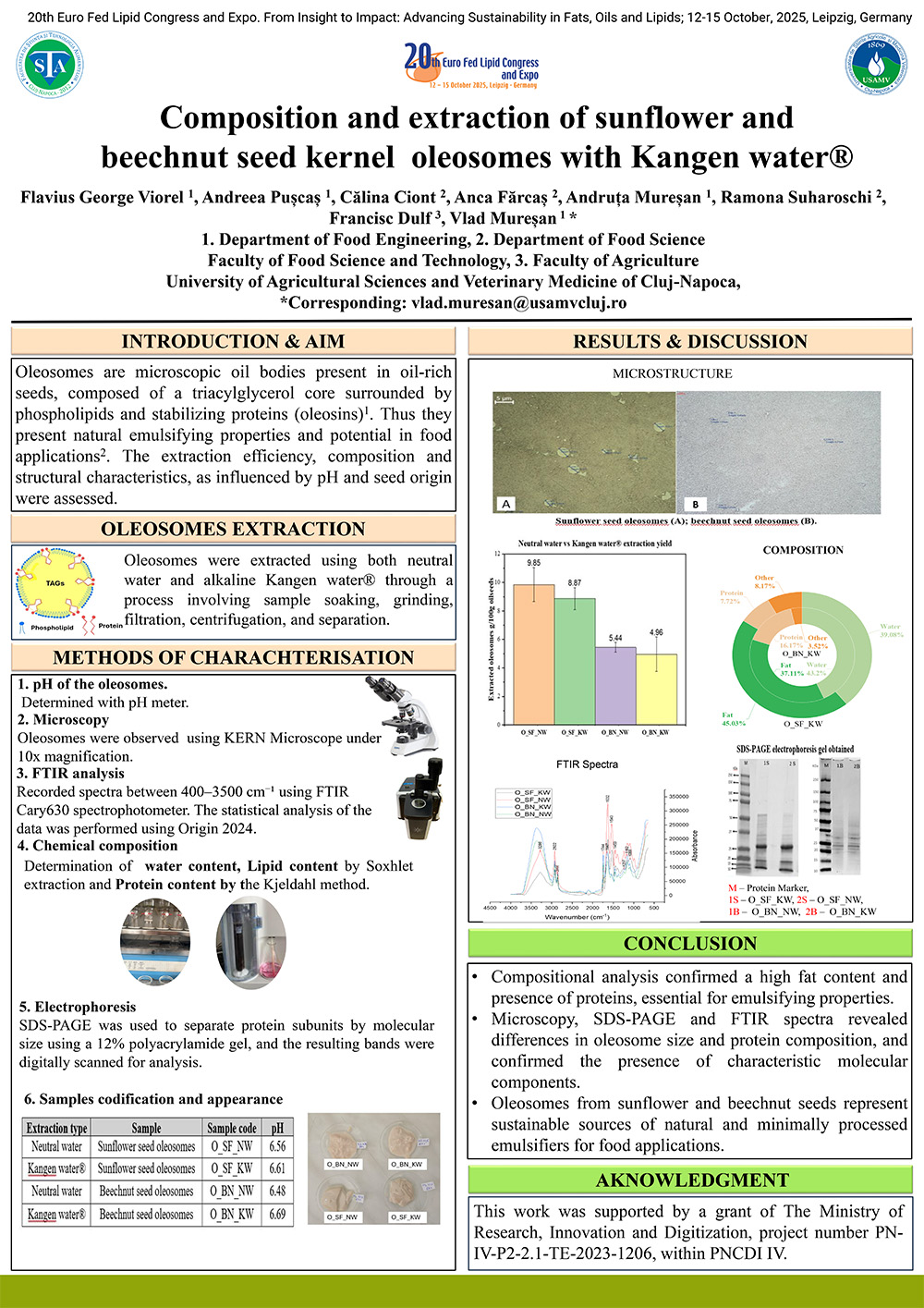Interest in plant-derived oleosomes in the food industry has recently grown significantly, as these unique natural emulsions are made of unrefined natural oil phase. Oleosomes are microscopic fat globules naturally found in oil-rich seeds. They consist of a core of triglycerides surrounded by a monolayer of phospholipids embedded with specific proteins, mainly oleosins, which stabilize the structure. pH influences the yields of extraction, for which reason Kangen water® (pH 11,5) was employed in obtaining oleosomes from sunflower and beechnut kernels. However, compared to conventional aqueous extraction, the yields were lower.
The composition of the oleoseoms was determined with AOAC approved methods, revealling that Beechnut samples contained 43.2% water, 37.11% fat, 16.17% protein, and 3.52% other compounds, while Sunflower samples had 39.08% water, 45.03% fat, 7.72% protein, and 8.17% other compounds, being considered valuable encapsulation media for unsaturated fatty acids. The FTIR (Agilent Technologies, Chelmsford, MA, USA) spectra presented peaks in regions charachteristic for fats, proteins, and phospholipids (2920–2850 cm⁻¹ and 1740 cm⁻¹, 1650 cm⁻¹ and 1540 cm⁻¹ , 1200–900 cm⁻¹ respectively). Oleosomes dimensions were between 0,87–3,32 μm, as determined with Kern, OBE-1 microscope (KERN & SOHN GmbH, Balingen, Germany) under x10 magnification. SDS-PAGE showed a broad distribution of protein bands, particularly in the 15–30 kDa region, for the Beechnut oleosomes, and a strong band around 15–18 kDa for Sunflower seeds oleosomes, suggesting structural and functional complexity. Oleosomes can be obtained from sustainable and cost efficient sources and will be further employed as natural emulsifiers in food products.
Acknowledgment: This work was supported by a grant of The Ministry of Research, Innovation and Digitization, project number PN-IV-P2-2.1-TE-2023-1206, within PNCDI IV
